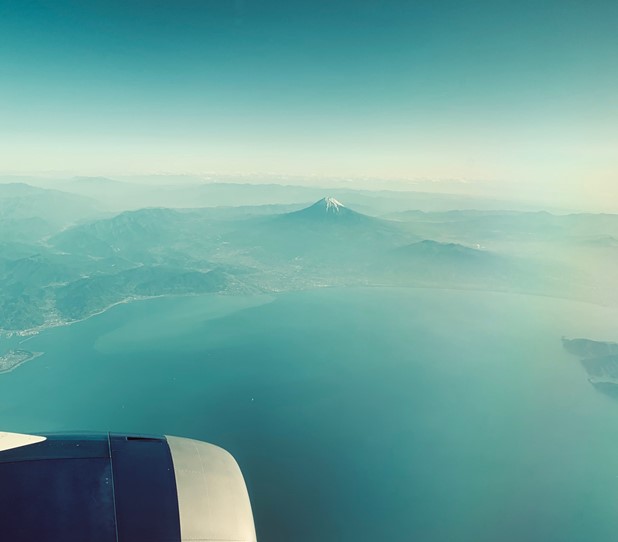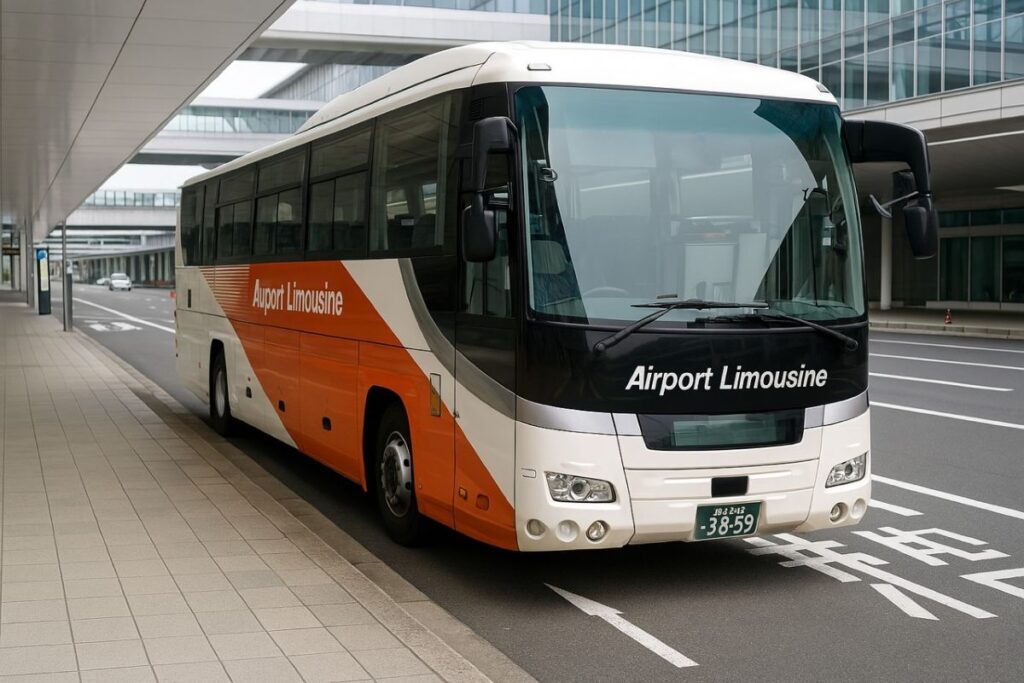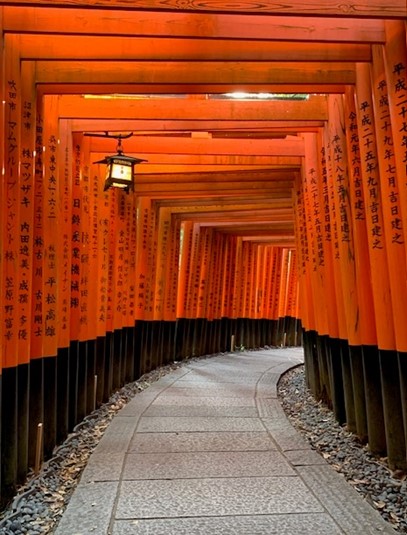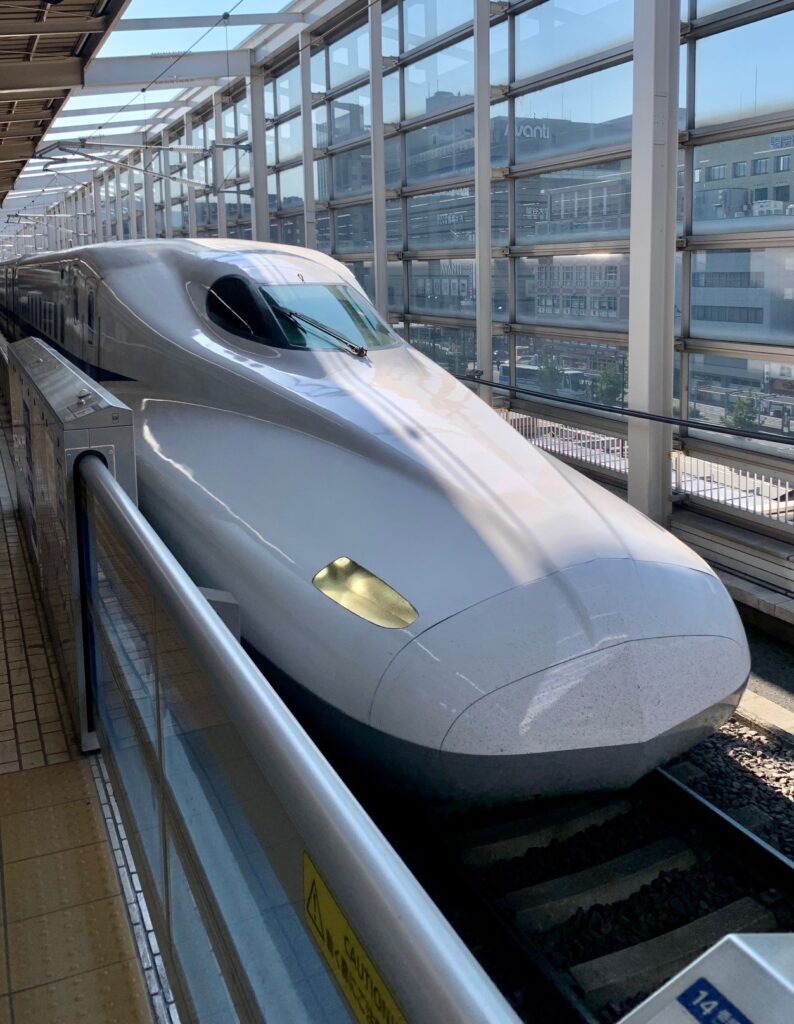Haneda Airport (HND) is the most convenient international airport for travellers arriving in Tokyo. Located just 20 km from the city centre, it’s significantly closer than Narita and offers a range of transport options to suit different budgets, group sizes, and comfort levels.
Despite being the easier of the two airports, it can still feel overwhelming for first time visitors finding your way to central Tokyo. A new transport system and a language barrier, plus you’ve likely just stepped off a long flight.
With a little research in advance and some handy apps, I was pleasantly surprised with how easy I found it. Lucky for you, you don’t even need to do the research as I’ve done this for you!
Below I have broken down all the options – trains, buses, taxis, and private transfers – with detailed instructions, prices, travel times. So read on and let me help save you some time, money and stress at the start of your Japan trip!
Overview of how to travel from Haneda airport to Tokyo
- Train (Tokyo Monorail or Keikyu Line): Fast, cheap, and ideal for solo or budget travellers.
- Airport Limousine Bus: Comfortable, good for families and luggage, stops at major hotels.
- Taxi: 24/7, door-to-door, expensive but convenient.
- Private Transfer: Pre-booked, fixed-price, great for groups and families. Tend to be cheaper than Taxis
- Other options: Car rental and hotel shuttles.
Disclaimer: This article features affiliate links. If you click these links, and choose to book with that hotel or company, I will earn a small commission at no extra cost to you. I appreciate the support that allows me to continue providing this information

Summary table of the best way to get from Haneda airport to Tokyo
Haven’t got time to read the full article? See my quick comparison table for reference. The details of the options are then broken out in the rest of my guide
| Transport Method | Time | Cost (Adult) | First/Last Service | Best For |
| Tokyo Monorail + JR/Subway | 30 min | ¥660 | 05:17 – 23:45 | Speed into Tokyo, JR Pass holders |
| Keikyu + JR/Subway | 30 min | ¥530 | 05:30 – 23:50 | Cheapest, direct routes |
| Limousine Bus | 45–60 min | ¥1,100–¥1,500 | 05:00 – 23:00 | Families, those with lots of luggage, direct hotel drops |
| Local Bus | 60–90 min | ¥500–¥1,200 | 06:00 – 22:00 | Budget travellers, those with little luggage, staying in a hotel on the route |
| Taxi | 30–60 min | ¥8,000–¥11,000 | 24 hours | Door-to-door, late-night |
| Private Transfer | 30–60 min | ¥7,000–¥10,000 | 24 hours | Groups, stress-free arrival, no thinking when you land |
| Rental Car | 30–60 min | ¥8,000+/day | 07:00 – 22:00 | Those travelling on road trips beyond Tokyo |
TOP TIP! Make sure you are fully prepared with my “First time visitor to Japan starter kit”
BREAK DOWN THE LANGUAGE BARRIER: The key phrases to learn and technology to use to make your first trip to Japan easy
HOW TO STAY CONNECTED ON THE GO: The cheapest data and easiest way to make sure you can access everything you need
HOW TO AVOID CURRENCY FEES LIKE A PRO: The best cards for travel and withdrawing cash
22 SMARTPHONE APPS TO MAKE YOUR TRIP EASIER: The ultimate FREE apps to download before you go
How to get from Haneda Airport to Tokyo by car?
Private Transfer
- Time: 30–60 minutes depending on traffic and location.
- Cost: From ¥7,000–¥10,000 per vehicle (fixed price).
- Booking: Online in advance via providers like Klook, GetYourGuide or Viator.
- Availability: 24/7.
QUICK SUMMARY: A private transfer is the best way to travel into central Tokyo in my opinion. It takes all the stress out of your journey after long international flights. They include meet-and-greet service in arrivals.
The ideal option for families or groups who want a guaranteed smooth arrival with luggage support. Official transfers will also provide car seats for children.
A more expensive way to travel, but can work out as good value still for a bigger group, especially given the level of convenience. I recommend shopping around before you leave home to see what prices you can get. Just make sure you only book through a reputable source.
TOP TIP! There are several companies that offer this service, however the flexibility of Klook has always been important to me and I am yet to be let down by their airport transfer service. BOOK YOURS HERE You can get a 10% discount on your first purchase with the code KEEPLOOKING10
By Taxi
- Time: 30–60 minutes (more in traffic).
- Cost: ¥8,000–¥11,000 (metered), flat-rate options from ~¥7,000 depending on district.
- Late-night surcharge: +20% after 22:00.
- Capacity: Up to 4 passengers.
- Availability: 24/7.
QUICK SUMMARY: I do not recommend getting a taxi. A private transfer has all of the convenience with the added benefits of meeting you in the terminal and usually being cheaper.
If you don’t want to arrange your transfer in advance then make sure you have your hotel address written in Japanese. Taxis are readily available around Haneda, so you will have no issues finding one.
QUICK TIP! I didn’t find Uber great in Japan, it was intermittent in being able to get a ride. I was recommended GoTaxi by a local and found that a lot better. Exactly the same premise as Uber, but they have a bigger driver network, you can also sign up with your international card and they have a free app so it’s very easy.

How do I get from Haneda airport to Tokyo by Train?
Tokyo Monorail
- Route: Haneda Airport → Hamamatsucho Station (connect to JR Yamanote Line).
- Time: 13–18 minutes then change onto the subway
- Cost: ¥500 (children under 11 half-price, free under 6); JR Pass holders ride for free.
- Operating hours: First train 05:17, last 23:45.
- Payment: Tickets can be booked online, IC cards (Suica/PASMO) or ticket machines.
QUICK SUMMARY: Great for travellers heading to Tokyo Station, Ueno or Shinjuku via the JR Yamanote Line. Trains are fast and frequent and most have good sized luggage racks
DETAILED HOW TO GUIDE:
- Follow signs for the Monorail station (if you arrive at Terminal 3, it’s on the 2nd floor of arrivals; for Terminals 1 and 2, the station is underground at B1).
- Book your ticket online before travelling or purchase a ticket from the machine or simply tap your Suica/PASMO IC card at the gate. The one-way fare into Tokyo is ¥500 (children 6–11 half-price, under 6 free). Trains depart every 3–4 minutes at peak times.
- If you hold a Japan Rail Pass, you’re in luck – the monorail ride is fully covered by the JR Pass, even though the monorail isn’t a JR company line. (Just show your pass at the manned gate to enter.)
- Ride the monorail to Hamamatsucho Station – the journey takes as little as 13 minutes on the fastest service (a few extra minutes if you catch a local train making more stops).
- At Hamamatsucho, follow signs to transfer to the JR Yamanote Line (or JR Keihin-Tohoku Line) which connects to major hubs like Tokyo Station, Shinjuku, Shibuya, and Ueno.
Keikyu Airport Line
- Route: Haneda Airport → Shinagawa Station (connect to JR or Toei Asakusa Line).
- Time: 11–20 minutes then change onto the subway depending on your hotel
- Cost: ¥3-400 (to Shinagawa); child half-price.
- Operating hours: First train ~05:30, last ~23:50.
- Payment: IC cards or ticket machines.
QUICK SUMMARY: Often the cheapest option. Trains continue onto the subway network, allowing some travellers to avoid transfers entirely. Trains have priority seating, which is useful if you are travelling with kids or those with mobility issues.
DETAILED HOW TO GUIDE:
- The Keikyu Line is a regular commuter train line. Look for signs to “Keikyu Line” or “Keikyu Railways” in the airport; the station is at the basement level of each airport terminal.
- Buy a ticket from the Keikyu machine or use an IC card – the fare to central Tokyo is even cheaper than the monorail, only ¥300–¥400 (¥330 to Shinagawa Station). Children are half price and kids under 6 are free
- Trains run about every 5–10 minutes. The fastest Keikyu services (the “Airport Rapid Express”) reach Shinagawa in around 11–14 minutes . Other Keikyu trains take about 18–20 minutes if they make more stops.
- At Shinagawa, you can transfer easily to the JR Yamanote Line (for Tokyo Station, Shinjuku, etc.) or even catch Shinkansen bullet trains to other cities.
- Some Keikyu trains don’t terminate at Shinagawa – they continue through onto the Toei Asakusa Subway Line, providing one-seat rides to destinations like Ginza, Asakusa, or Oshiage (Tokyo Skytree).
- If your hotel is in those areas, you might not need to transfer at all – check the train’s destination display. Through services take a bit longer, for example, about 30–40 minutes to Asakusa, with a fare around ¥600–¥700.

Travel from Haneda to Tokyo by bus
If you have large suitcases or simply want a no-hassle ride straight to your hotel, buses are a good choice. Haneda Airport offers an extensive network of Airport Limousine Buses that connect to dozens of locations and hotels across Tokyo.
There are also a few regular public bus routes that run to central areas. Buses are a bit slower than trains on average (since they deal with road traffic), but they provide a comfortable seat and space for your luggage, with no transfers needed.
Airport Limousine Bus
- Route: Direct to major hotels and stations in Tokyo.
- Time: 40–60 minutes (depends on traffic).
- Cost: ¥1,100–¥1,500 (children half-price).
- Operating hours: Early morning to ~23:00.
- Late-night service: Special “midnight” buses until 02:00 (they cost more: ¥2,000+).
- Payment: Can be booked online in advance, at a counter, machine, or IC card.
QUICK SUMMARY: No transfers needed, plenty of luggage storage. Ideal for families or those with big suitcases.
DETAILED HOW TO GUIDE:
- The orange-and-white Airport Limousine Buses are a familiar sight at Haneda. Upon arriving, look for the Limousine Bus ticket counter (in Terminal 3, it’s on the arrivals floor near the exits ; in Terminals 1 and 2, there are counters in the arrival lobbies).
- At the counter, you can tell the staff your destination (for example, “Shinjuku Station” or a specific hotel) and buy a ticket.
- The staff will assign you the next bus and direct you to the correct bus stop just outside.
- You can also use ticket vending machines nearby, or even book online in advance to secure a seat – useful during peak seasons
- The buses are equipped with large luggage holds under the seats – you’ll hand big bags to the attendant or driver who will tag and stow them for you, and you reclaim them when you get off.

Local Buses
- Route: Haneda to Tokyo Station, Asakusa, etc.
- Time: 60–90 minutes.
- Cost: ¥500–¥1,200.
- Operating hours: Vary by route, generally ~06:00 to ~22:00.
- Payment: IC card or exact change onboard.
QUICK SUMMARY: Not as comfortable as the Limousine buses, but good for those on a tight budget. No dedicated luggage storage, so more challenging for those with big bags. Given ths is a choice for those on a budget, I would personally recommend getting the train, as it’s a similar cost and faster.
Other options from Haneda airport to city centre
Car Rental
- Cost: From ¥8,000/day plus fuel, tolls, and parking.
- Requirements: International Driving Permit (sort this in your home country before you leave)
- Suitability: Not recommended for city stays. Only worth considering if you are driving out of Tokyo.
QUICK TIP! Haneda Airport has multiple car rental agencies (Toyota Rent-a-Car, Nissan, Times, etc.) with counters at the terminals.
Renting a car at the airport to drive into Tokyo is technically possible, but for city travel it’s usually not recommended for a few reasons:
- Tokyo’s public transport is excellent
- Driving can be slow due to traffic jams.
- Parking in the city is expensive
Hotel Shuttles
- Some airport-area hotels offer free shuttle service.
- However, most city hotels do not provide airport transfers.
- Check directly with your accommodation.
Unlike some cities, Tokyo’s downtown hotels generally do not provide free shuttle buses from the airport, they rely on the Airport Limousine Bus network.
A few airport-area hotels have complimentary shuttles for their guests. If you happen to be staying at a hotel near Haneda for an overnight layover, check if the hotel offers a shuttle and where to find it (usually they pick up at bus stops at the terminal).

FAQ’s about getting from Haneda to Tokyo
What’s the cheapest way from Haneda to Tokyo?
The cheapest method is to take the Keikyu Line train from Haneda to Tokyo. A one-way ticket to Shinagawa Station is only about ¥330 , and even with a connecting JR train to your final stop, the total will be well under ¥600.
If you have a Japan Rail Pass already, the Tokyo Monorail to Hamamatsuchō (included free on the pass) is also an extremely cheap option. Essentially free aside from the cost of the pass. Remember that children 6–11 travel half-price on trains and buses, and children under 6 ride free, so families can save with public transport fares as well.
What’s the fastest way from Haneda airport to central Tokyo?
Taking a train is the fastest way. Both the Tokyo Monorail and the Keikyu Line will get you to a central Tokyo station in roughly 15 minutes (monorail to Hamamatsuchō, or Keikyu to Shinagawa).
Add a short transfer to the JR Yamanote Line, and you can be at Tokyo Station or Shinjuku in about 30 minutes total.
Is there a 24-hour option from Haneda to Tokyo?
Yes, taxis and private transfers run 24/7. Midnight buses run on limited routes until 02:00. All trains stop around midnight.
Can I use a Suica or PASMO card to get from the airport to my Tokyo hotel?
Yes, Suica, PASMO, and other compatible IC cards are widely accepted on virtually all trains and buses in Tokyo. The only transport mentioned here where an IC card won’t directly work for the base fare is a pre-booked private transfer or taxi.
What’s best for families or travellers with luggage?
In my opinion, a private transfer is the best option for families. They are a bit more expensive, but it’s door-to-door service with help from the driver, which parents with children will appreciate (especially after a long flight!).
If you are on a tighter budget the Airport Limousine Bus is often the best balance of ease and cost. The bus will store your heavy luggage for you, and you can sit comfortably with your children without worrying about navigating stations or crowded train cars. It will drop you near, or at, many hotels in Tokyo.



Pingback: Hotels near Haneda Airport with free shuttle bus - Travel tips and guides - Global Trip Diaries
Pingback: The best family friendly Tokyo hotels - Travel tips and guides - Global Trip Diaries
Pingback: The 35 best restaurants in Tokyo: Budget to High End - Travel tips and guides - Global Trip Diaries
Pingback: Hotels near Tokyo Disneyland with free shuttle buses - Travel tips and guides - Global Trip Diaries
Pingback: Where to stay in Tokyo First time guide to the best hotels - Travel tips and guides - Global Trip Diaries